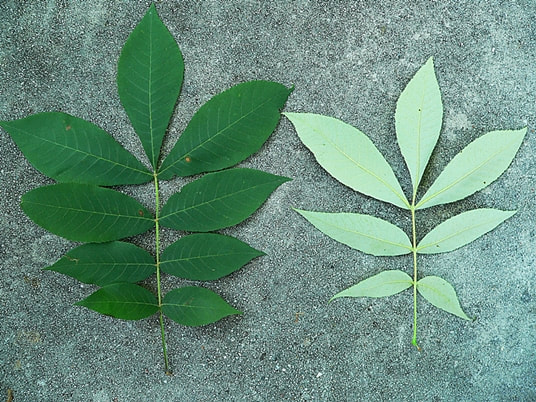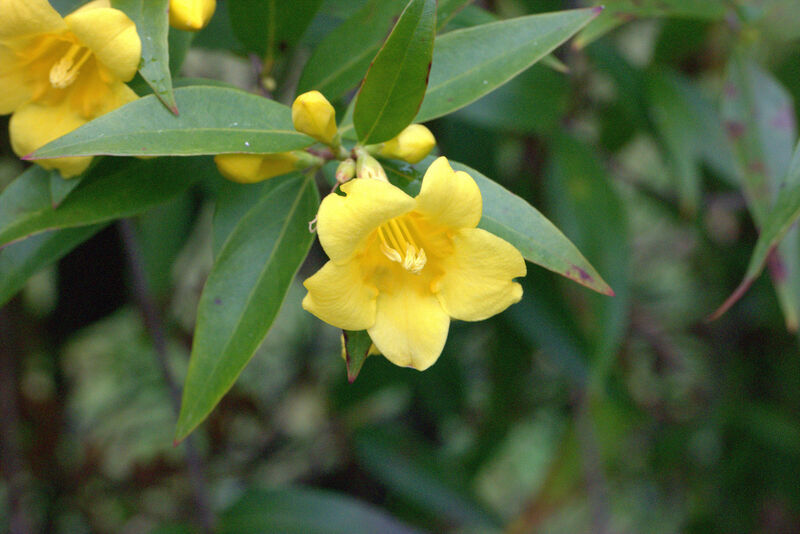Cumberland Plateau/Ridge & Valley Acidic Glades and Barrens
|
Acidic glades and barrens have outcroppings of bare rock interspersed with gravelly, thin-soiled barrens, scattered shrubs, and some islands of stunted trees, especially Virginia pine. These communities occur on rocks that weather to form sandy, acidic, gravelly, and fast-draining soils, such as sandstone and conglomerate. The rocks are resistant to weathering, so they form the capstones and ridgetops of the ecoregion, where they are exposed to high sunlight levels, which amplifies the effects of the thin soils and rock, creating a harsh but beautiful habitat that encourages pines, heath species such as rhododendrons and mountain laurels, grasses and sun-loving wildflowers.
|
|
Indicator and representative species: Virginia pine, mountain laurel, black gum, little bluestem, big bluestem, and oat grasses.
What's special: these openings support grasses and composites that are not found in surrounding forests, increasing the diversity of plant and animal species. The outcroppings can be beautiful, with rounded rock formations called "turtlebacks" lichen-encrusted sandstone, and picturesque formations. The views from the ridgetops, overlooking the ridges and valleys of the ecoregion, can be spectacular.
Related communities: Overlaps Acidic Cliffs and Outcrops community, and may be embedded within Pine-Oak Woodlands.
Learn MORE HERE about plant adaptations to rocky places.
What's special: these openings support grasses and composites that are not found in surrounding forests, increasing the diversity of plant and animal species. The outcroppings can be beautiful, with rounded rock formations called "turtlebacks" lichen-encrusted sandstone, and picturesque formations. The views from the ridgetops, overlooking the ridges and valleys of the ecoregion, can be spectacular.
Related communities: Overlaps Acidic Cliffs and Outcrops community, and may be embedded within Pine-Oak Woodlands.
Learn MORE HERE about plant adaptations to rocky places.
|
Plants
Click on a plant name to see images, Plants are listed in order by scientific name. Trees Red maple Acer rubrum Black birch Betula lenta Downy serviceberry Amelanchier arborea Pignut hickory Carya glabra Pale hickory/Sand hickory Carya pallida Mockernut hickory Carya tomentosa Sourwood Oxydendrum arboreum Shortleaf pine Pinus echinata Virginia pine Pinus virginiana Post oak Quercus stellata Rock chestnut oak Quercus montana Shrubs Fringe-tree Chionanthus virginicus Witch-hazel Hamamelis virginiana Mountain laurel Kalmia latifolia Catawba rhododendron Rhododendron catawbiense Great rhododendron Rhododendron maximum Gorge rhododendron Rhododendron minus Winged sumac Rhus copallinum Vines Bush-honeysuckle Diervilla sessilifolia Carolina jessamine Gelsemium sempervirens Muscadine grape Vitis rotundifolia Summer grape Vitis aestivalis Ground Layer Wildflowers Harebell Campanula divaricata Glade rushfoil Croton willdenowii White wood aster Eurybia divaricata Little flower alumroot Heuchera parviflora Rock alumroot Heuchera villosa Quaker ladies/bluets Houstonia caerulea Pineweed Hypericum gentianoides St. John's-wort Hypericum stragulum Dwarf iris Iris verna Dense blazing star Liatris spicata Carolina lily Lilium michauxii Menges rock-pink/fameflower Phemeranthus mengesii Appalachian rock-pink/fameflower Phemeranthus teretifolius Appalachian milkwort Polygala curtissii Goldenrod (sweet) Solidago odora Spiderwort (hairy) Tradescantia hirsuticaulis Spiderwort (smooth) Tradescantia ohiensis Blue curls Trichostema dichotomum Grasses Big bluestem Andropogon gerardii Wavy hairgrass Avenella flexuosa Silky oatgrass Danthonia sericea Poverty oatgrass Danthonia spicata Little bluestem Schizachyrium scoparium Ferns and Fern Allies Mountain spleenwort Asplenium montanum Ebony spleenwort Asplenium platyneuron Twisted-hair spikemoss Bryodesma tortipila Appalachian rockcap fern Polypodium appalachianum Rockcap fern Polypodium virginianum Marginal woodfern Dryopteris marginalis Hairy lipfern Myriopteris lanosa |
Representative Trees in order by scientific nameRepresentative Shrubs and Vines, in order by scientific nameRepresentative Wildflowers, in order by scientific nameRepresentative ferns in order by scientific name
|










































